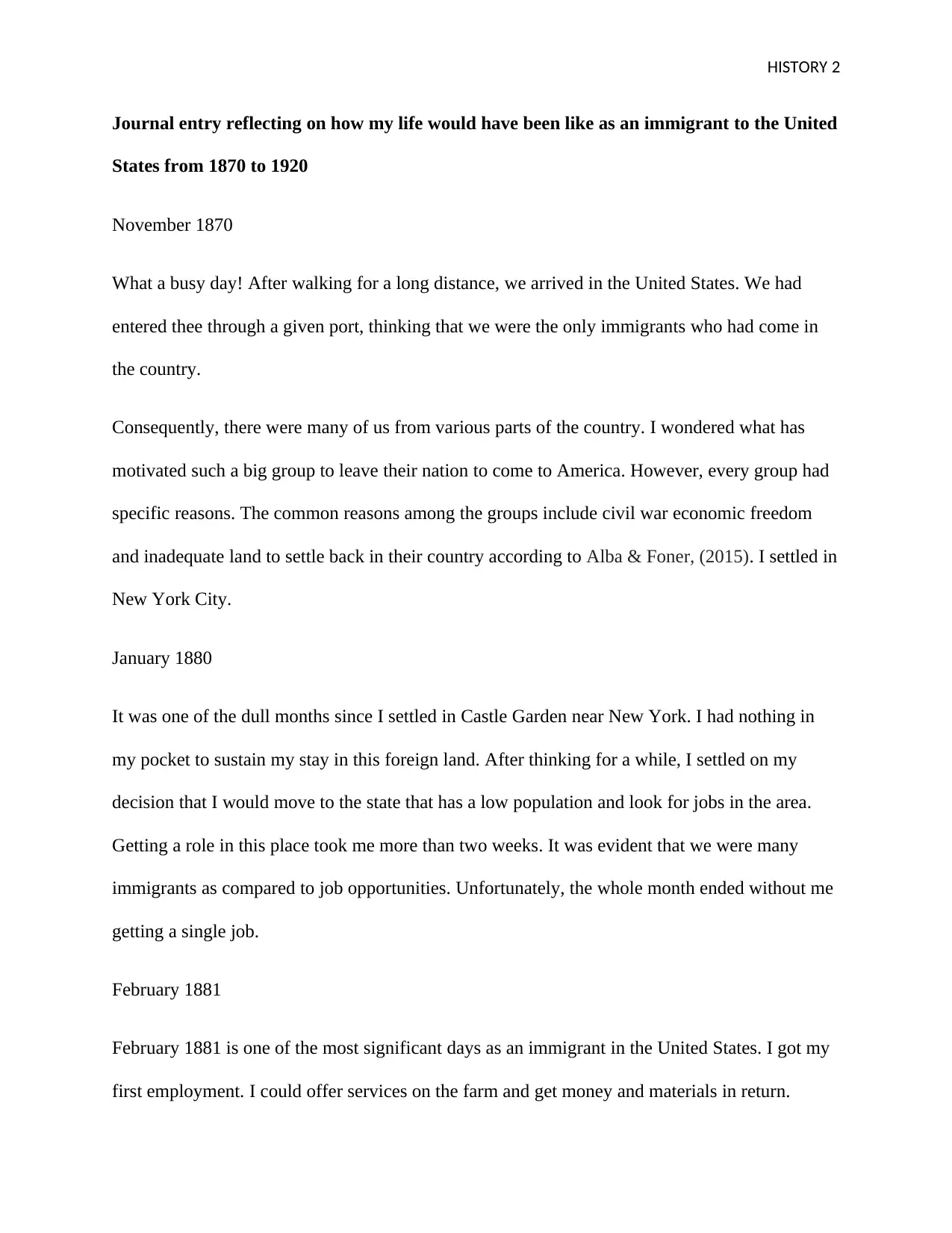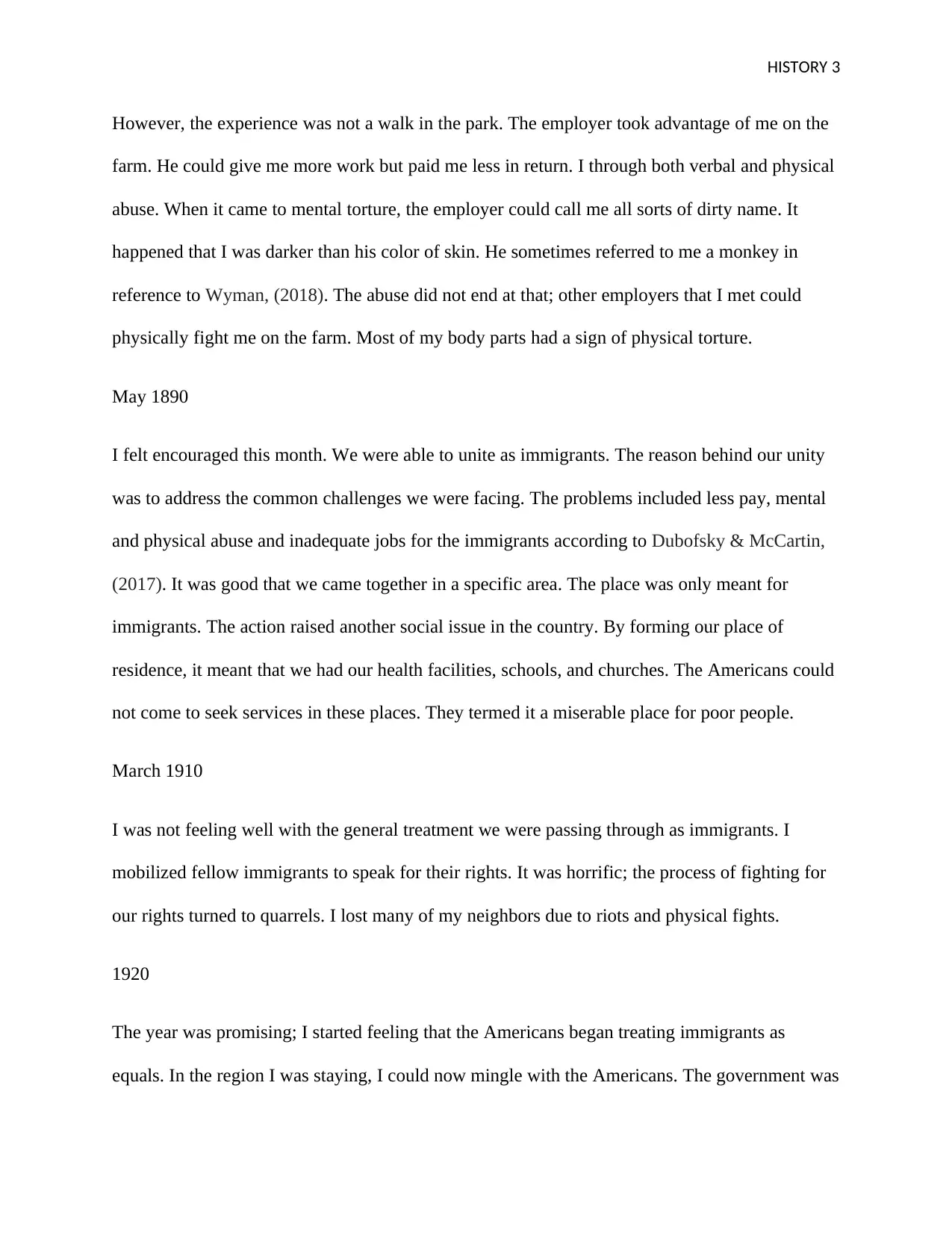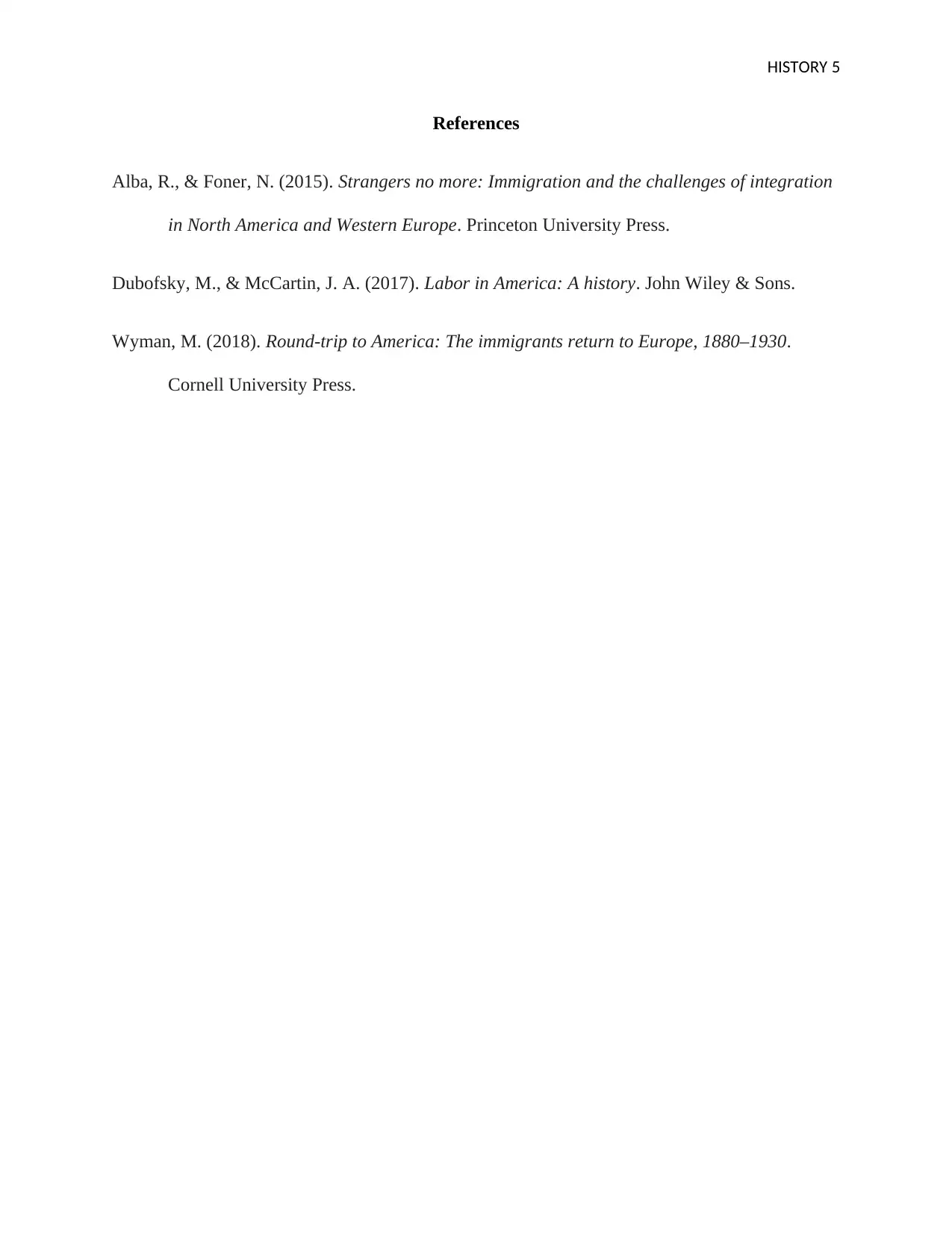History Journal: Life as an Immigrant in the United States, 1870-1920
VerifiedAdded on 2023/04/07
|5
|669
|307
Journal and Reflective Writing
AI Summary
This journal entry offers a reflective account of an immigrant's experience in the United States from 1870 to 1920. The narrative begins with the arrival in New York City in 1870 and details the challenges faced, including economic hardship, job scarcity, and exploitation on farms. The journal highlights instances of discrimination, verbal and physical abuse, and the formation of immigrant communities to address shared issues like low pay and inadequate jobs. The entry chronicles the immigrant's struggle for rights, the conflicts faced, and the eventual, albeit slow, progress towards equal treatment and integration with Americans by 1920. The author references Alba & Foner (2015), Dubofsky & McCartin (2017), and Wyman (2018) to support the historical context of the immigrant experience.
1 out of 5









![[object Object]](/_next/static/media/star-bottom.7253800d.svg)